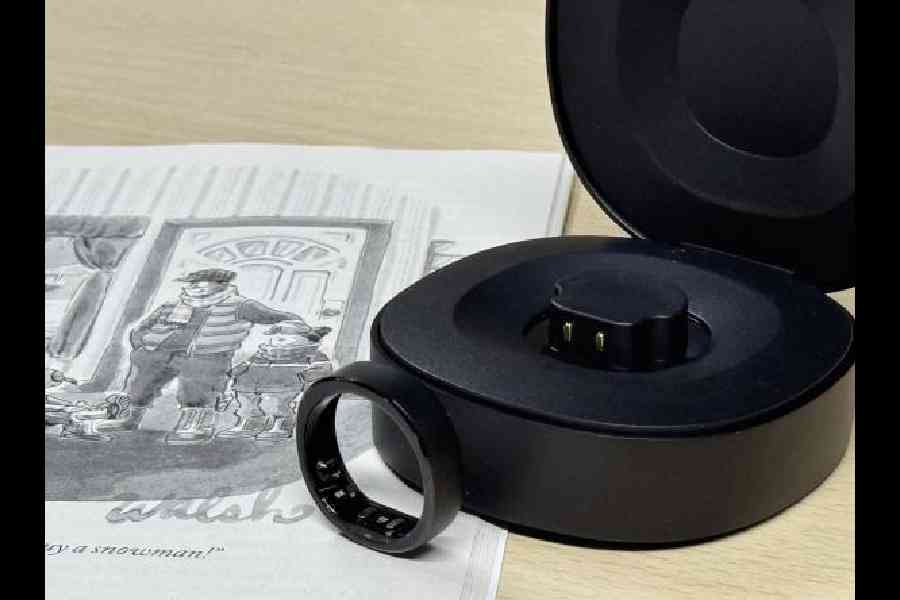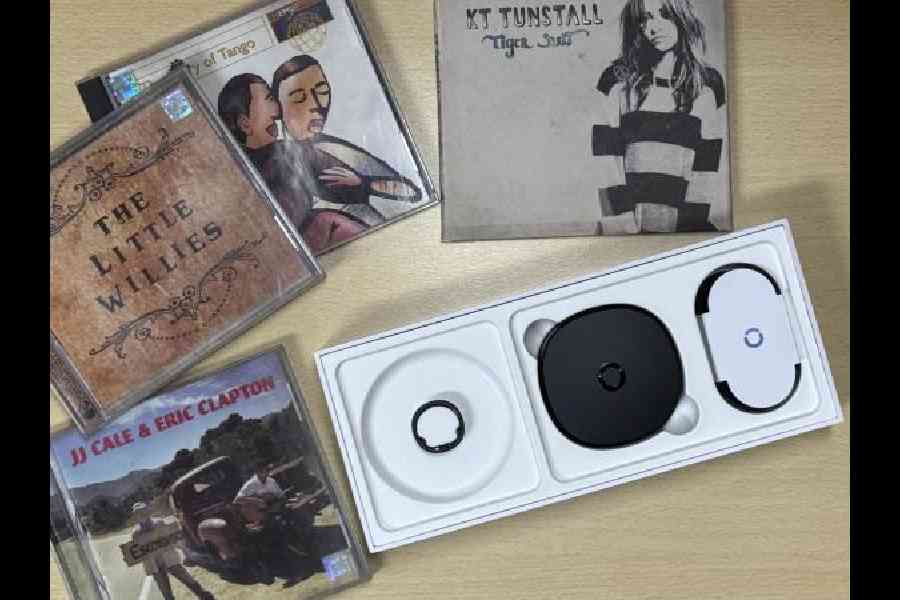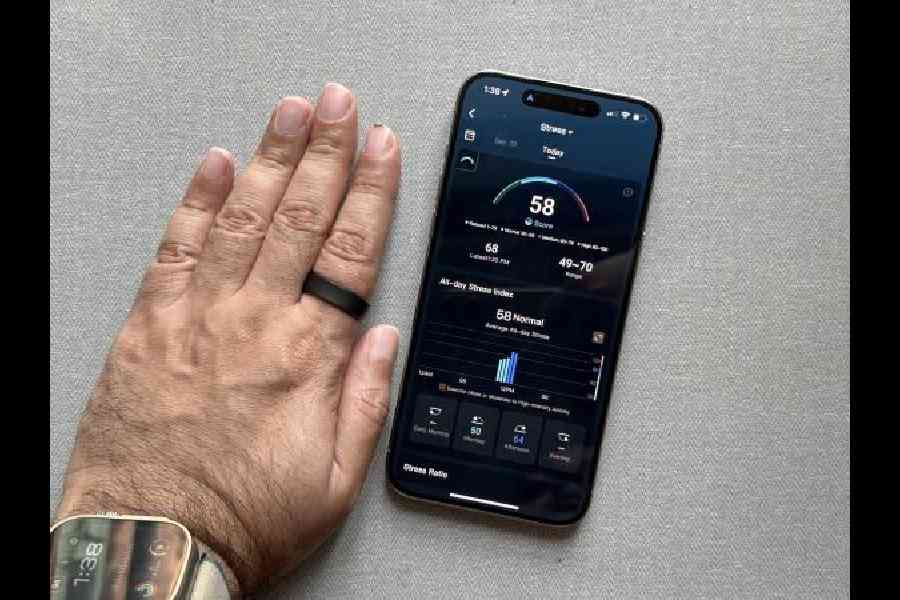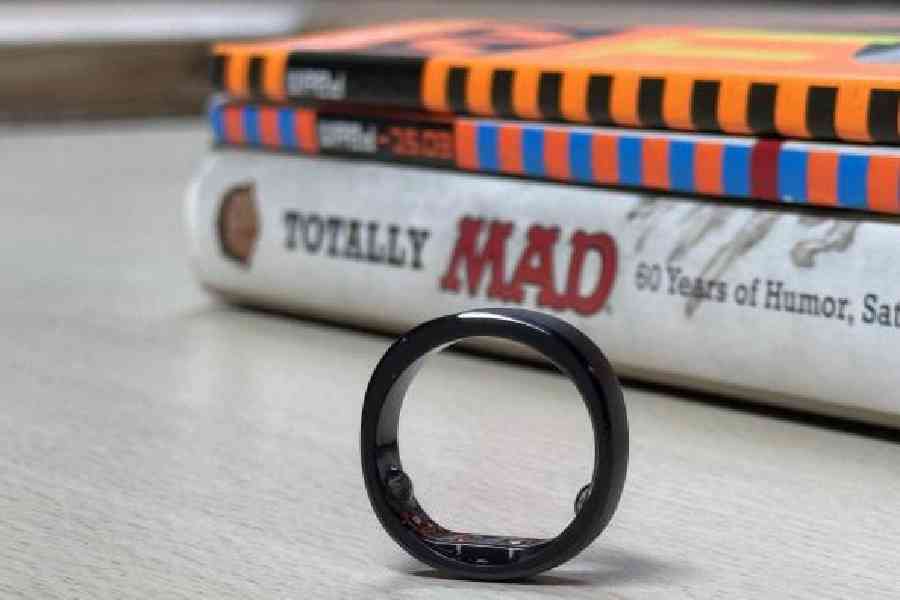Next year will be about smart rings in India. The craze has been on for a few years in the West while in India, the trend is taking off. Samsung will be the one to thank if this wearable device picks up steam because no company has the bandwidth to offer the ring as well as proper sizing kits as much as the South Korean tech giant.
Having said that, Samsung is yet to launch their Galaxy Ring in India and there is no tentative date. What I have been using for the last few weeks is RingConn Gen 2, a smart ring that allows sleep apnea monitoring and more. The Kickstarter price for the device is $209 while MSRP is $299. Disclaimer: The review device was shipped across.

RingConn Gen 2 leverages advanced AI, providing insights into sleep health factors like nighttime breathing and respiratory variations
Does it fit your lifestyle?
Smart rings are supposed to be less obtrusive than smartwatches. Consider this: While going to bed, many find it difficult to wear a smartwatch because of the comfort level. Smart ring can be worn on the finger and it can capture certain metrics quite well. Also, battery life is far better than on a smartwatch since there is no screen involved.
I received size 11 in matte black. In the box is the ring, a wireless charging box and an excellent quality braided USB-C cable.
It would be unjust to compare this with the Samsung Galaxy Ring, which I have used for a short duration during its launch, but the feel on the finger is comparable. On the thinner side but it’s visible to people you meet. It’s a practical design and works well even in the rain.

With an IP68 rating, the RingConn Gen 2 is designed to endure various conditions
When the company approached for review, I was asked about the ring size but I didn’t have a sizing kit. So I went with what Samsung had offered during its ring launch in Paris. It worked out well. I usually wear smart rings on my index finger to get all the metrics correct.
A quick aside: In India, smart rings can play an important role in the wearable health market but there is a twist: At times, finger finery is restricted to “spiritual decisions”. So, there may not be much scope for smart rings, which work best on the index finger. All the sensors are on the same side of the ring and are usually lined up at the bottom. You’re supposed to align all those sensors with the palm side of your hand for the best readings, and then you’re supposed to wear it on your index finger for the best results. You can wear it on the ring finger but some engineers insist on the index finger.
RingConn has a matte finish and over the few weeks I have been using it, there has been zero discomfort. It brings me to an important part. What do you expect from a smart ring? If you are someone who lifts weights every other day or goes golfing or plays tennis, smart rings are not for you because they will hamper movement. I don’t do any of these exercises, so for me smart ring is perfect for measuring steps and keeping an eye on the quality of sleep. For someone who wants to use a smart ring to gather fitness data while exercising, make sure the workout list accommodates your routine.
Coming back to the design of the ring, it can be kept flat on its side. There is a QR code on the inside, which didn’t show up anything for me when I pointed the camera at it. But there must be a use case for it.
Excellent battery life
The ring size I chose is 11 and that’s on the larger side but it has its upside: A bigger battery inside the ring. Practically speaking, you get around 10 days or so of battery life though RingConn mentions a slightly higher figure. Perhaps it has to do with how often I want the smart ring to read my metrics. I make it read my heart rate every few minutes. The charging box is not as sophisticated as the one being offered by Samsung but it certainly gets the work done. If someone is travelling even for 10 days, there is no need to carry the charging case, even though it’s quite small.

Despite its slim design, the RingConn Gen 2 incorporates advanced PPG sensors, temperature sensors, and 3D accelerometers to ensure accuracy
The app appears comprehensive and you can get an overview of sleep hours, steps taken, an estimation of stress level and heart rate data. You can get a snapshot of your historical data. For the past few weeks, I have been waking up to check my phone for health data.
New to the second generation RingConn is sleep apnea monitoring. Of course, you must be thinking that Samsung and Apple have both introduced the feature on their smartwatches. With a ring, it’s easier to collect data and is not uncomfortable. Now, what you get is a beta application. My bigger question is are we qualified to read the data and make sense of it? I would leave that to sleep experts. A smart ring is not a substitute for a doctor’s diagnosis. What the ring can succeed in doing is giving you warnings if you need to meet the doctor. And that’s helpful.

The RingConn Gen 2 features local data backup, allowing for uninterrupted health monitoring even when your smartphone is not connected
Should you buy it?
I feel the smart ring does have a place in the market, especially with interest in sleep data increasing because we are leading fast lives. And it doesn’t hurt for a smart ring to suggest that sleep apnea conditions could be present and it’s time to meet the doctor. Further, the ring is in the second generation, which makes me feel comfortable about the brand slightly more than usual. Don’t just buy it for its sleep apnea diagnosis capabilities but you can always compare the other data you are gathering from the ring with what your smartwatch is offering. It looks like RingConn Gen 2 is aiming for a long-term relationship with users.
At a glance
Device: RingConn 2
High notes
Light and excellent battery life
Sleep apnea detection is there
Good finish
IP68 waterproof
Metrics roughly on the lines of a smartwatch
Muffled notes
Not meant for every exercise routine
Smartwatches still offer more metrics, so why a smart ring










